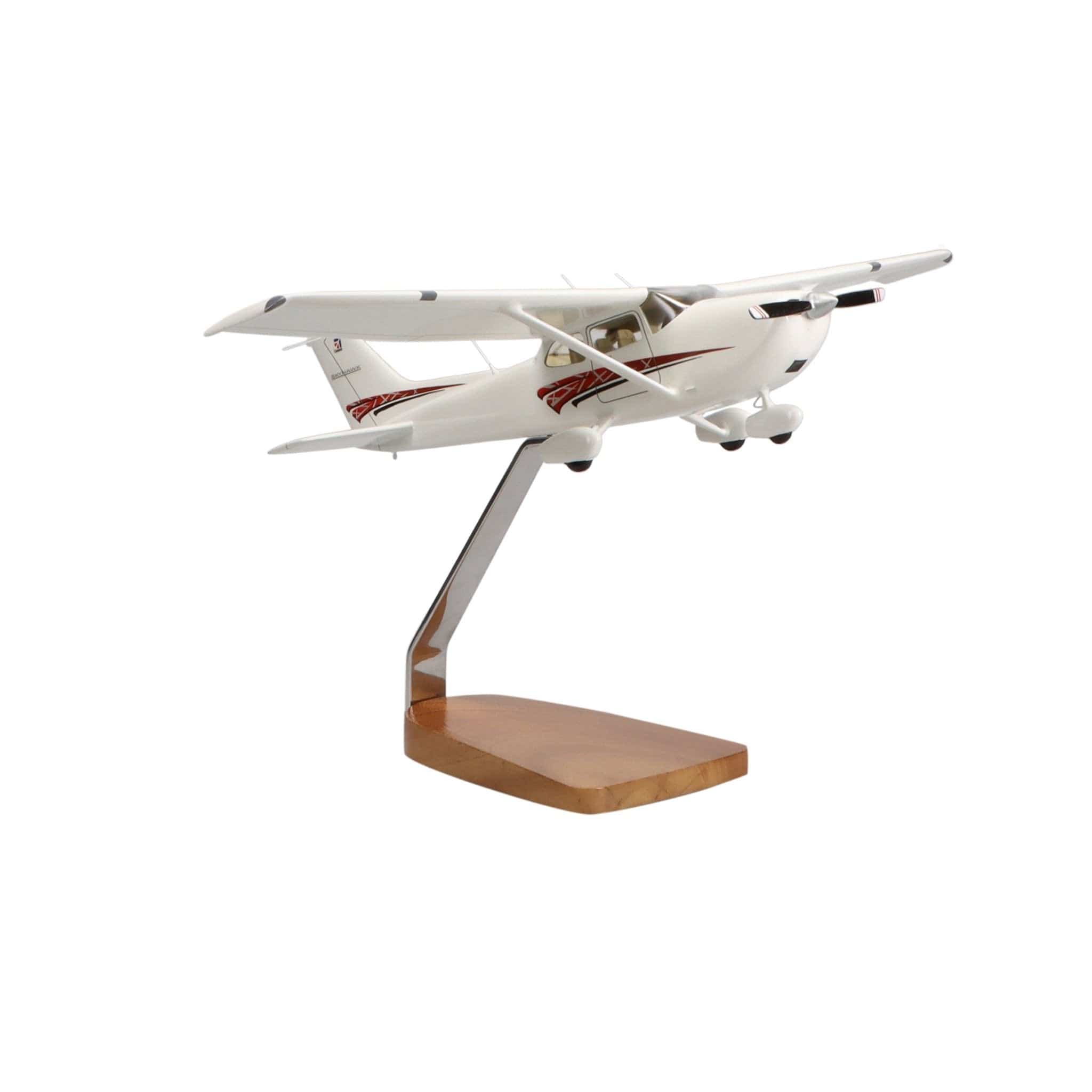Few aircraft have as unique and cutting-edge a design paired with as unfortunate and note-worthy a commercial track record as the Beechcraft Starship.
From the years leading up to its release until well after its subsequent demise, this aircraft has been the topic of much discussion and debate.
What was unique about the Starship’s design? What caused the Starship to fail so spectacularly from a sales perspective, and what could Beechcraft have done differently? Where are the remaining Starships now and how many are still flying? What are the take-aways from its story?
Today we’ll explore the answers to these questions and more.

(source: By Ken Mist , CC BY 2.0, Wikipedia Link)
Introducing the Beechcraft Starship
The Beechcraft Starship was a twin turboprop pusher with a canard design and composite construction. It was first produced in 1983 and was intended to be the successor to Beechcraft’s 15-year-old King Air 200 for the executive transport market, however only fifty-three Starships were produced prior to Beechcraft discontinuing the line in 1995.
Standard Specifications (for 2000A)
- Crew: 1-2
- Passenger capacity: 6
- Basic empty weight: 10,085 lbs.
- Maximum takeoff weight: 14,900 lbs.
- Maximum landing weight: 13,680 lbs.
- Average cruise weight: 12,500 lbs.
- Useful load: 4,525 lbs.
- Fuel capacity: 564 gallons
- Engines: 2 Pratt & Whitney PT6A-67A turbo-props
- Propellers: 2 McCauley 5-bladed, 104 in. diameter
- Forward wing span: 21 ft, 11.5 in. (aft position), 25 ft. 8 in. (forward position)
- Forward wing area: 61.51 sq. ft.
- Aft wing span: 54 ft., 4.7 in.
- Aft wing area: 280.88 sq. ft.
Performance Specifications
- Maximum speed: 335 kts. (385 mph.) at 32,000 ft.
- Cruising speed: 324 kts. (373 mph.) at 25,000 ft.
- Stall speed: Effectively un-stallable
- Average range: 1,148 - 1,514 nm
- Service ceiling: 35,000 ft. (2 engines) or 18,000 ft. (1 engine)
- Maximum rated altitude: 41,000 ft.
- Take-off distance: 3,854 ft. (at 14,900 lbs)
- Landing distance: 2,390 ft. (at 13,680 lbs.)
- Rate of climb (at 1,4,900 lbs.): 2,748 ft./min. (2 engines) or 670 ft./min. (1 engine)
What was unique about the Starship’s design?
As they began looking for their next great aircraft, Beech turned to legendary innovative designer Burt Rutan and his company, Scaled Composites.
The goal was to design an aircraft that had a large quiet cabin like the King Air but with a reduced weight, improved structural stability and good efficiency.
Composite construction
The Beechcraft Starship earned the first FAA certification for a full composite business class aircraft. The value of composite over metal construction is in its light weight and strength.
By using composites like carbon graphite, E-glass and Kevlar, the Starship avoids the long-term structural weaknesses inherent to aluminum airframes. Corrosion, even near the ocean is a non-issue.
Composite also doesn’t transmit noise or vibration as much as aluminum – making for a quieter ride.
Turboprop pusher design
Moving the turbo-prop engines to the rear of the aircraft, paired with the noise dampening properties of the composite construction, gave the Starship a pleasantly quiet cabin similar to that of a jet. The Starship was the first business class twin turboprop pusher to be FAA certified.
Canard wing configuration
With a canard wing configuration, the Starship’s lifting surface (or main wing) is aft of the horizontal stabilizer (or forewing/canard).
This makes the aircraft very difficult to stall. The forward surface stalls first, causing the nose to dip slightly into an angle of attack that avoids main wing stall.
All glass cockpit
The Beechcraft Starship was one of the first aircraft born in the computer age, and its designers embraced technological advances. They did away with steam gauges completely, opting to produce the first certified all glass cockpit.
(Check out this video by Dwayne's Aviation on the Beechcraft Starship)
Why was the Starship a commercial failure?
Despite all of the research, innovation and collaboration that went into designing it, the financial legacy of the Beechcraft Starship is one of exorbitant failure. Of the fifty-three Starships that were produced, few were sold.
The majority of the fleet were leased by Beechcraft’s parent company Raytheon until they decided to recommission them in 2003 saying, “We made the business decision that because of the low number of aircraft in service, and the specialized parts necessary to keep the aircraft flying, that it did not make sense from a business standpoint to continue to support the aircraft."
The lingering question is, “What went wrong?” Having had several decades to debate that, aviation experts and Beechcraft Starship owners have arrived at several theories.
Revolutionary design
Going out on a limb with such a unique design and so many aviation firsts was a calculated risk by Beechcraft, and in this case, it didn’t pay off. The theory is that many potential customers were interested in the Starship, but they didn’t want to be the first to trust their lives to it.
Rather than take the risk of being an early adopter, they hung back to see how the Starship performed, and this hindered sales.
Poor market timing
The Beechcraft Starship had the unfortunate added challenge of being released into a stagnated aviation market at the height of the 1989 economic recession.
Even proven executive aircraft designs with an excellent track record were hard to sell, let alone an unconventional new craft like the Starship.
Robert Scherer, owner of Starship NC-51, has spent a lot of time studying what went wrong and talking with industry insiders. He has interesting insight into a second timing error that Raytheon made.
Robert notes that by 1995, the economy had improved and the industry had begun to recognize the advantages of composite structure and all glass cockpits.
He says that if Raytheon had focused on promoting the Starship’s design and touting its now proven safety record, it would have been perfectly positioned to excel.
Instead, citing the over $300 million spent on the program and its lackluster results, they canceled production.
Price
The Starship release was accompanied by a sticker-shock price tag of $3.9 million for the original 2000 model and $4.7 million for the subsequent 2000A. This made it far more expensive than the King Air it was set to replace.
In fact, the Starship’s retail price was on par with a jet rather than other turbo-props of the time. Part of the cause for the high price tag was the FAA-mandated airframe strengthening (more on that later.)
Misconceptions
In an effort to boost sales, Raytheon decided to offer free maintenance to Starship buyers. Unfortunately, this PR idea backfired in several ways.
First, since Starship owners didn’t have to pay for it, extensive and sometimes unnecessary maintenance was frequently done on aircraft.
This increased the costs to Raytheon and further soured their impression of the Starship program since they saw the Starship as a money hog.
The second misconception that arose as a result of the free maintenance offer was also devastating.
Prospective customers learned about all the maintenance that was being done and incorrectly assumed that the Starship must be an unreliable and expensive aircraft to maintain. This scared them off and further decreased sales numbers.
FAA impact
The FAA is inherently and understandably cautious about certifying any radically new type of aircraft, especially one that is meant for commercial use. In being the first composite airframe, the Starship paved the way but also paid the price.
The original design called for a max weight that was under the 12,500-pound FAA limit for non type rated operation.
Unfortunately, when the FAA told Beechcraft that they must significantly strengthen the airframe’s design – just in case – prior to certification, that resulted in increased weight.
The increased weight bumped the Starship over the limit, requiring the pilot to get a type rating. Many pilots choose to simply go with another aircraft that could be flown with a twin-engine rating instead.
The FAA-driven re-design also caused a reduction in the original projected performance and an extended delivery timeline while buyers waited for the aircraft to log twice the normally required amount of test time to gain FAA certification.

(Check out this video by The History Channel on the Beechcraft Starship)
What happened to the 53 Beechcraft Starships that were produced?
Robert Scherer loves his Starship and has devoted much of his life to keeping the remaining Beechcraft Starship fleet in the air. To this end, he purchased the entire parts inventory from Raytheon when they decommissioned their Starship fleet. Robert also keeps track of the locations and status of all fifty-three Starships.
As of his most recent update, 5 of the Starships are privately owned and are in active service in three of the United States (Colorado, Oklahoma, Texas) and Germany.
Eight were donated to museums, 1 was donated to a collage, and another 4 were donated for composite testing. Private parties own 8 decommissioned Starships.
When Raytheon decommissioned their fleet, they dismantled or destroyed the majority of their Starships along with any units they were able to buy back from private parties, although they do still have 2 registered aircraft located in Wichita, KS. Robert says that all told, 24 Starships have been confirmed dismantled or destroyed. Most of their remains are at the boneyard in Marana, AZ.
The two Starships with perhaps the most interesting stories are the NC-35 and the NC-51. According to Robert, the NC-35 was the only Starship to ever be involved in a “major” incident which took place in Denmark. It was subsequently repaired, returned to service and is currently “residing in Mexico as an outlaw.”
The pride of the remaining Beechcraft Starship fleet is Robert’s lovingly cared for NC-51. This lucky Starship has been used for Burt Rutan during the chase plane re-entry phase of SpaceShipOne, the Virgin Atlantic Global Flyer, the X-37, the White Knight 2, and the Predator-B Reaper. Robert promises that regardless of what happens to the rest of the Starships, his “will never be scrapped.”
NC-51 isn’t the only Starship to find a good home. Both NC-50 and NC-33 are still in service as business aircraft and are flown regularly out of their Texas home with brothers Raj and Suresh Narayanan of Aerospace Quality Research & Development (AQRD).
Robert, Raj and Suresh aren’t the only ones with an ongoing interest in the Starship. The History Channel interviewed Robert for its Beechcraft 2000 Starship feature and AOPA talked with Raj for its mini documentary on this memorable aircraft.
Take-Aways
The legacy of the Starship is one of revolutionary vision and ahead-of-its-time innovation coupled with an unfortunate series of fatal circumstances.
We are all left wondering what could have been had the FAA not forced a re-design, had the Starship been released into a better market, had Raytheon made a marketing push in 1995 to generate sales, and had prospective buyers been ready to take a chance on such a radically new design.
Ultimately, innovation is a risky business and to be a trailblazer is also to risk spectacular failure, yet pushing the boundaries is how we evolve and advance. Nowhere is that more evident than in the sad, yet proud story of the Beechcraft Starship.
Want to learn about other aircrafts?
Check out these links to read about amazing aircrafts and their history!
Did you find this article helpful?
Do you think we missed anything important? Let us know in the comments below!










4 comments
Terry Dill
In 1986 I was employed by Beech as a contract service engineer, involved with status inspections of the aging Beech 99s. The Beech Commercial division had a mobile office located near the Beech airstrip. I was killing time waiting for a NDT class and was sitting at a table observing the second or third prototype of the Starship doing takeoff and landings. The office was bustling with Beech employees. On one takeoff of the Starship, I muttered, “That aircraft is never going to make it.” The office staff was stunned by my comment. I quickly realized that these people’s future was invested in the Starship’s success. Brad Stinson, the head of the commercial division, approached me and asked me why I thought that the Starship wouldn’t be a success. I responded that if a passenger were to merely step on the edge of the airstair door and break the corner, that would ground the aircraft. And there would be no facility/technician experienced and equipped to fix it. He responded that Beech is aware and they were working on that. They developed teams and policies that were intended to address field maintenance.
Robert Paul Viramontes
Worked at Beechcraft West, Hayward, Calif. in the early 1980’s and had one of the early prototypes in for work. Interesting aircraft. To bad it never caught on in the Aviation world.
Dean A Curtis
The first starship I ever saw was the one that was in the incident in Denmark. I wish I’d taken a picture. If I remember right it was a simple ground handling error, chopped off a bit of the wing tip. Kind of fun to know it ended up in Mexico. I did too, but long after I left Denmark.
Fredrick W. Holstein Jr
Robert Scherer is a great friend of mine . I was his CFI for his instrument rating and multi engine rating prior to both of us earning our type ratings in NC51 right after he purchased it I just gave him his latest flight review in N514RS née NC51. He has 3000 hours in his airplane and continues to be one of the sharpest and best pilots I have ever had the pleasure to fly with . Great article